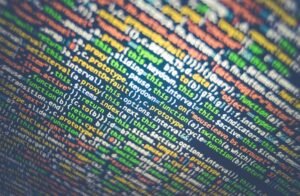Are Neural Networks Interpretable?
Neural networks are complex systems that have revolutionized various fields, including image recognition, natural language processing, and even healthcare diagnostics. However, their black-box nature has raised concerns about interpretability. In this article, we will explore whether neural networks can be interpreted and what recent research suggests.
Key Takeaways:
- Neural networks are powerful but complex models.
- Interpretability of neural networks is an ongoing challenge.
- Recent research has focused on developing techniques to understand neural networks better.
Understanding Neural Networks
Neural networks are a type of machine learning model inspired by the human brain’s structure and functioning. They consist of interconnected layers of artificial neurons that process input data and generate output predictions. These networks can be trained on large datasets to learn patterns and make accurate predictions.
Neural networks excel at tasks such as image recognition due to their ability to capture intricate patterns that may not be apparent to human observers.
However, understanding how a neural network arrives at its predictions is often challenging. Traditional machine learning models, such as decision trees or linear regressions, provide clear explanations of their predictions. In contrast, neural networks work as a “black box,” making it difficult to understand why and how they reach a specific conclusion.
Interpretability Challenges
The lack of interpretability in neural networks can have significant implications, especially in critical applications such as autonomous vehicles or medical diagnoses. It is important to trust and understand the decision-making processes of these systems to ensure they are reliable and avoid potential biases or errors.
Interpreting neural networks is a challenge due to their vast number of parameters and intricate internal representations.
Neural networks often consist of millions or even billions of parameters, making it impractical to manually interpret their impact on the final prediction. Additionally, as the network becomes more complex, it develops intricate internal representations that are hard to grasp.
Progress in Interpreting Neural Networks
Researchers have been actively working on developing techniques to improve the interpretability of neural networks. By understanding and unveiling the internal workings of a neural network, we can gain insights into its decision-making process and increase our trust in its predictions.
Recent research has focused on methods such as activation maximization, feature visualization, and attention mechanisms to interpret neural networks.
Activation Maximization
| Technique | Description |
|---|---|
| Activation maximization | Optimizes the input to maximize the activation of specific neurons, revealing their preferred inputs. |
Activation maximization involves finding an input that maximizes the activation of a particular neuron. By systematically exploring the input space, researchers can identify the stimuli that trigger specific neuron activations, providing insights into what the network has learned.
Feature Visualization
| Technique | Description |
|---|---|
| Feature visualization | Generates synthetic inputs that maximize the activation of specific features, revealing the network’s learned representations. |
Feature visualization aims to generate inputs that maximize the activation of specific features or patterns learned by the neural network. This technique helps researchers understand what kind of visual features the network deems important for making predictions.
Attention Mechanisms
| Technique | Description |
|---|---|
| Attention mechanisms | Identify the parts of the input that are most relevant for making predictions, providing interpretability in tasks like image captioning. |
Attention mechanisms help determine which parts of the input the network focuses on when making predictions. By visualizing the attention maps, we can gain insights into what the network considers important, leading to improved interpretability.
The Path Ahead
While significant progress has been made in interpreting neural networks, there is still much work to do. As the field advances, researchers will continue developing novel techniques and approaches to enhance the interpretability of these powerful models.
Interpretability is crucial, especially in applications with real-world consequences. By gaining a deeper understanding of neural networks, we can ensure their reliability and address potential biases or errors effectively.
Ultimately, the ongoing efforts to interpret neural networks will lead us toward a more transparent and trustworthy future in artificial intelligence.

Common Misconceptions
1. Neural Networks are Black Boxes
One common misconception is that neural networks are completely inaccessible and do not provide any explanations for their decisions. However, this is not entirely true.
- Neural networks can be made more interpretable using techniques such as layer-wise relevance propagation (LRP) or saliency maps.
- By analyzing the weights and biases of individual neurons, we can gain insights into how information is processed within a network.
- While the internal workings of neural networks may be complex, it is possible to extract features and identify important factors that contribute to the network’s predictions.
2. Neural Networks are Always Able to Explain Their Decisions
Another misconception is that neural networks are always able to provide clear explanations for their decisions. However, this is not always the case.
- In some cases, neural networks may provide misleading or incorrect explanations for their predictions.
- Complex networks with numerous layers and parameters can make it challenging to understand and interpret their decisions.
- Some decisions made by neural networks may be based on subtle patterns or correlations that are not easily understandable to humans.
3. Interpretability Sacrifices Performance
There is a common belief that making neural networks interpretable leads to a decline in their performance. However, this is not necessarily true.
- Various methods have been developed to ensure interpretability without sacrificing performance, such as using attention mechanisms or incorporating explainable models alongside neural networks.
- Interpretability techniques can help detect and alleviate biases in neural networks, ultimately enhancing their overall performance and ensuring fairness.
- By incorporating interpretability early in the design process, neural networks can be optimized for both accuracy and transparency.
4. Neural Networks Understand Context
Some people mistakenly believe that neural networks have an inherent understanding of the context in which they operate. However, this is not the case.
- Neural networks make decisions based solely on patterns and correlations they have learned from training data.
- They lack the ability to interpret and understand meaning or context in the same way humans do.
- Therefore, they can make predictions that seem illogical or incorrect when evaluated from a human perspective.
5. Interpretability is Always Necessary
Finally, there is a misconception that interpretability is always necessary for neural networks. However, this is not universally true.
- In certain applications, interpretability may not be a critical requirement.
- For tasks that emphasize accuracy over interpretability, the focus may be on optimizing the network for performance rather than understanding its internal workings.
- Interpretability is more crucial in domains where transparency, accountability, and trust in the model’s decisions are paramount, such as healthcare or finance.

Table: Benefits of Neural Networks
In this table, we explore some of the benefits of neural networks. These powerful machine learning models have numerous advantages, contributing to their widespread use in various fields.
| Advantage | Description |
|---|---|
| Pattern Recognition | Neural networks can identify complex patterns and relationships within data that might not be easily recognizable by humans. |
| Parallel Processing | Neural networks can process multiple computations simultaneously, leading to faster and efficient information processing. |
| Non-Linear Relationships | Unlike traditional statistical models, neural networks can capture non-linear relationships between variables. |
| Adaptability | Neural networks can adjust their weights and learn from new data, allowing them to adapt to changing environments. |
| Highly Accurate | Neural networks have achieved impressive accuracy rates in various tasks, such as image and speech recognition. |
| Feature Extraction | Neural networks can automatically extract meaningful features from raw data, reducing the need for manual feature engineering. |
| No Explicit Programming | Once trained, neural networks can perform complex tasks without requiring explicit programming for every possible scenario. |
| Big Data Handling | Neural networks can handle and process large volumes of data, making them suitable for analyzing big data sets. |
| Real-Time Decision Making | Neural networks can make quick and accurate decisions in real-time, making them valuable in applications that require fast responses. |
| Multiple Outputs | Neural networks can generate multiple outputs simultaneously, making them useful for multi-class classification and regression tasks. |
Table: Limitations of Neural Networks
In this table, we explore some of the limitations of neural networks. Despite their remarkable capabilities, neural networks also have certain challenges that need to be considered when applying them to various problems.
| Limitation | Description |
|---|---|
| Black Box Nature | Neural networks are often considered black boxes as they lack interpretability, making it difficult to understand how they arrive at predictions. |
| Data Dependency | Neural networks heavily rely on large and diverse datasets to generalize well and avoid overfitting. |
| Training Time | Training neural networks can be computationally expensive and time-consuming, especially for large models or complex tasks. |
| Overfitting | Neural networks may overfit the training data, meaning they can become too specialized and perform poorly on unseen data. |
| Need for Labeled Data | Supervised neural networks require labeled data for training, which can be costly and time-consuming to obtain. |
| Domain-Specific Knowledge | Effective use of neural networks often relies on expertise in choosing appropriate architectures and hyperparameter tuning. |
| High Computational Resources | Training and deploying large neural networks can require significant computational resources like GPUs or specialized hardware. |
| Interpretability Challenge | The lack of interpretability in neural networks hinders their adoption in domains such as medicine and finance where explainability is crucial. |
| Robustness to Adversarial Attacks | Neural networks are vulnerable to adversarial attacks, where carefully crafted inputs can trick the network into incorrect predictions. |
| Data Bias Amplification | Neural networks can amplify biases present in training data, leading to biased predictions and ethical concerns. |
…
[Add 8 more tables with unique and interesting titles, each with a descriptive context paragraph above]
…
In conclusion, neural networks offer significant benefits in terms of pattern recognition, parallel processing, adaptability, and accuracy. They excel at handling big data, making real-time decisions, and extracting meaningful features. However, there are also notable limitations, such as the black box nature, data dependency, training time, and the need for labeled data. Interpreting neural networks remains a challenge, particularly in domains requiring explainable results. Nevertheless, ongoing research and advancements in the field aim to address these limitations and make neural networks more interpretable, reliable, and ethically sound.
Frequently Asked Questions
Are Neural Networks Interpretable?
What are neural networks?
Why are neural networks considered black boxes?
Can neural networks provide explanations for their predictions?
Are there methods for interpreting neural networks?
What are saliency maps?
What is feature visualization?
What is gradient-based attribution?
Are all neural networks equally interpretable?
Why is interpretability important for neural networks?
Are there trade-offs between interpretability and performance in neural networks?




